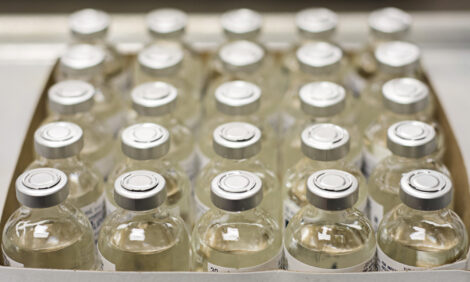



New study reveals numbers on ammonia emissions from poultry farms
A new study commissioned by the Chesapeake Bay Foundation (CBF) and conducted by researchers at North Carolina State University has determined an estimate of the amount of nitrogen that reaches the Chesapeake Bay due to ammonia emissions from poultry farms on Maryland’s Eastern Shore.vThe study, published in the journal Science of The Total Environment, determined that more than 600 poultry houses emit an estimated 33.8 million pounds of ammonia per year and about 24.4 million pounds of that ammonia was deposited to land and water on the Eastern Shore. The ammonia comes from chicken litter and is emitted as a gas from the poultry houses. Ammonia contains nitrogen, which is a Chesapeake Bay pollutant.
The study does have some limitations. The model didn’t account for litter amendments or other practices to reduce ammonia emissions that are in use, but the extent of which is unknown. Due to the lack of publicly available information, the study also assumed the poultry houses were at full capacity for 365 days a year, which is often not the case. CBF will be working with the poultry industry and other stakeholders to incorporate additional data related to these assumptions.
The Chesapeake Bay Program estimates that about 11 percent of the ammonia gas emitted in Maryland makes its way into tidal waters and the Bay. Using that percentage, CBF estimates that the ammonia emissions from the poultry houses in the study could deliver as much as 3.8 million pounds of nitrogen to the Bay each year.
That figure is about a quarter of the Bay Program’s estimate of the total nitrogen loads generated from all agriculture activity on Maryland’s Eastern Shore. CBF has questions as to how accurately ammonia emissions are currently being estimated in the Bay Program model.
Reducing nitrogen is a key component of the Chesapeake Bay Clean Water Blueprint - the interstate plan to reduce Bay pollution by 2025. The ammonia estimate provides insight into how the Eastern Shore’s poultry industry is contributing to overall nitrogen loads in Maryland that are entering the Bay.
Another key finding of the study is that the ammonia gas doesn’t travel far from the poultry house where it was created. About 30 percent of emitted ammonia is deposited to land or water within a third of a mile of the poultry house and about 70 percent is deposited within 31 miles. This means that much of the pollution is staying within the Bay watershed after being emitted.
“We hope this study will encourage farmers, poultry industry leaders, and regulators to work together to better understand the significance of this source of nitrogen to the Chesapeake Bay,” said Beth McGee, Director of Science and Agricultural Policy for the Chesapeake Bay Foundation. “And utilize ways to minimize and reduce it.”
The N.C. State researchers used data from the Maryland Department of the Environment to determine the locations of poultry operations on the Eastern Shore and their bird capacity. They then calibrated a model using field measurements of ammonia at various locations around the Shore to estimate the amount of gas being generated by the different operations.
“The Chesapeake Bay is plagued with poor water quality due to excess loads of reactive nitrogen and phosphorus,” said Viney Aneja, Professor in the Department of Marine, Earth, and Atmospheric Sciences at N.C. State University and a lead researcher on the study. “These excess nutrients cause algal blooms that reduce water clarity, create drinking water concerns, and contribute to the Bay’s dead zone. Using a combination of measurements and modeling, we estimated ammonia emissions from poultry production on Maryland’s Eastern Shore totaled more than 33 million pounds per year and about 72 percent of that amount is deposited back to the region around the Bay. This will further exacerbate water quality in the Chesapeake Bay.”
CBF believes the information can be used to promote the use of manure amendments, bird diet management, and other options currently available to reduce ammonia emissions. The state should also require ammonia mitigation as part of its permitting process for animal feeding operations.
“The poultry industry on the Delmarva Peninsula continues to grow and if nothing is done the pollution created by these operations will grow with it,” said Alison Prost, Maryland Executive Director for the Chesapeake Bay Foundation. “We need to offset any new nitrogen loads or risk falling behind on the Bay’s 2025 cleanup goals.”
During the past 20 years the pounds of chickens processed on the Delmarva Peninsula has grown by 36 percent, according to Delmarva Poultry Industry, Inc.
Poultry operations on the Eastern Shore also contribute to phosphorus pollution—another primary Bay pollutant, which like nitrogen, can fuel algal blooms that cause dead zones devoid of oxygen in the water. Phosphorus runs off farm fields during and after rains if farmers apply too much chicken manure to fields. CBF has been urging Maryland agriculture officials to fully implement and not delay the phosphorus management tool, which is designed to reduce pollution from fields already saturated with too much phosphorus.









